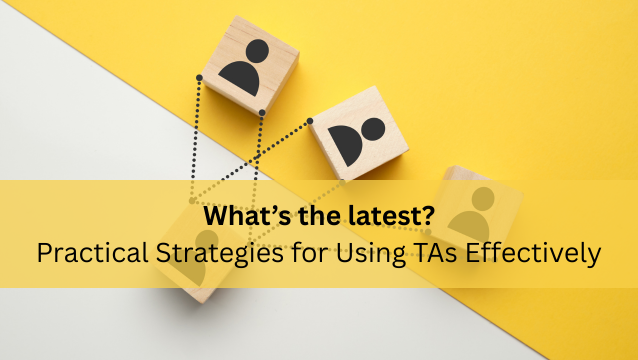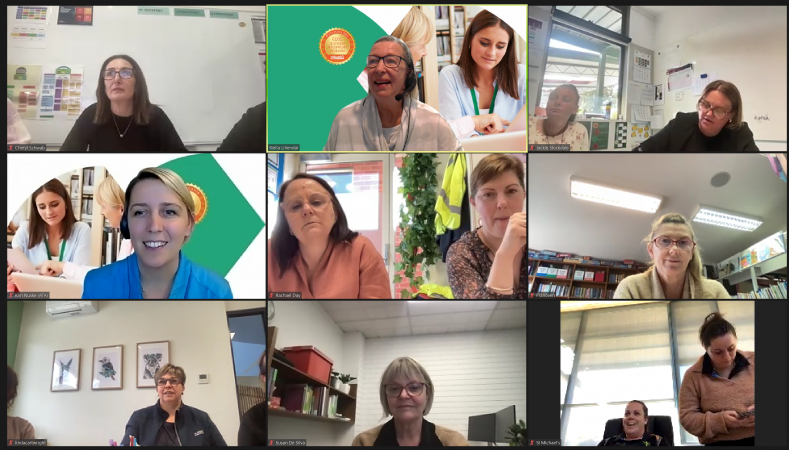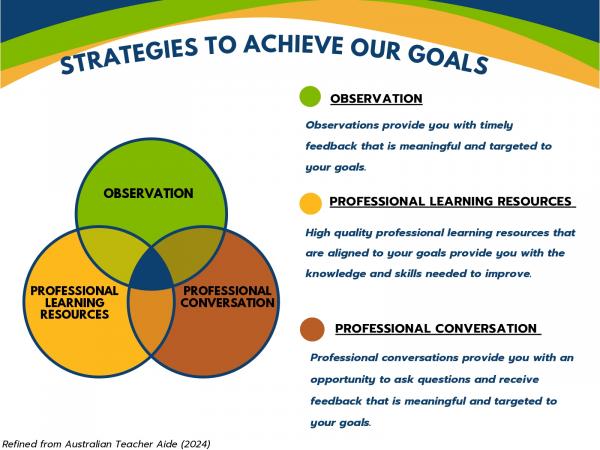TA Led Interventions Improve Student Literacy and Numeracy Results
If you read that the student skipped across the playground in haste to get to the [intervention] session, you would want to know more about what was going on, right?
What caught my attention, were the results of seven EEF studies with the heading, Teaching Assistants: most promising results. (See Table 1)
The Education Endowment Foundation (EEF) was established in the UK in 2011, to fund research that supports teachers and schools to use high quality data to improve their practice and student attainment, based on evidence based decisions.
Recently it trialled seven TA led literacy and numeracy intervention programs, with a 100% success rate. Rob Webster, from the UCL Institute of Education, whose research has focused on the impact of teaching assistants, said that ‘a 100% success rate, over seven trials, is almost unheard of, and there is something unignorable about the impact of teacher aides.’
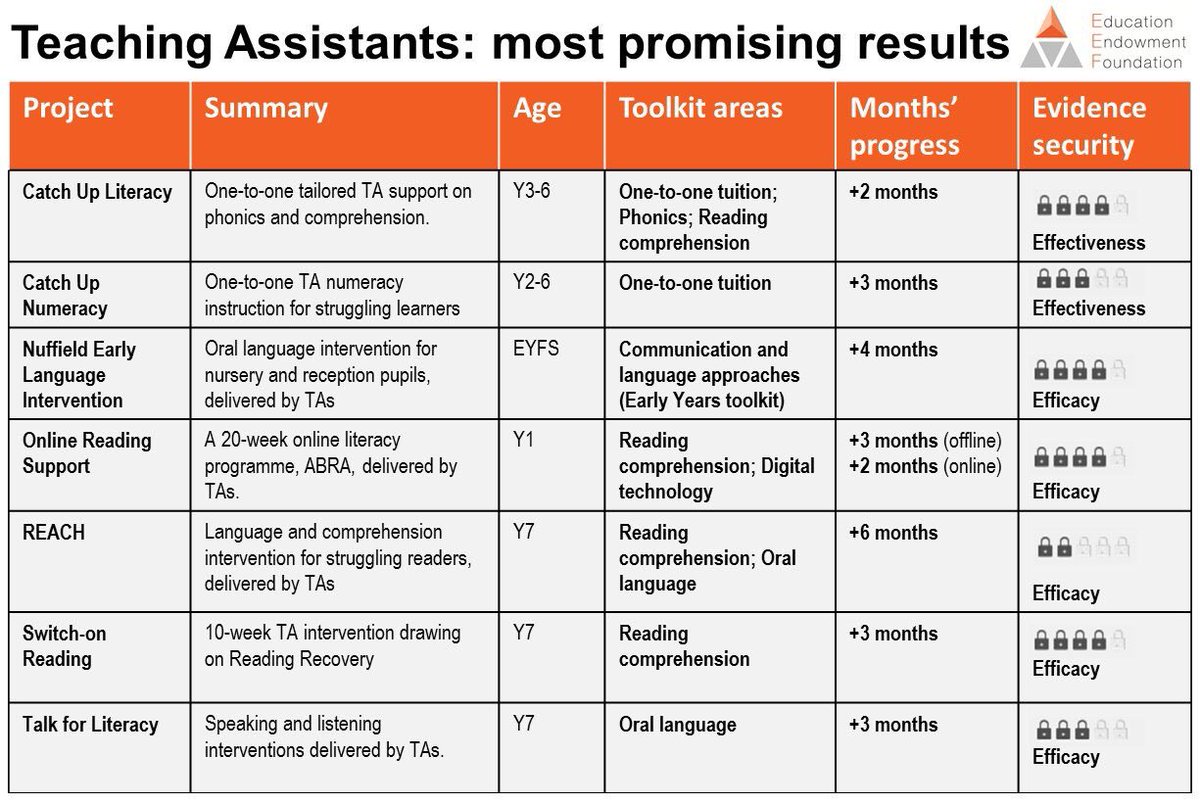
Table 1: Summary of UK RTC Evaluation Results for EFF funded Teaching Assistant Led Interventions, by Jonathan Sharples, Education Endowment Foundation, and adapted by Rob Webster, MITA Lead & Researcher, UCL Institute of Education, October 2016.
What makes a successful literacy intervention program?
To gain a better understanding of what makes a successful TA led intervention program, let’s look at the outcome of one of these trials.
The ABRA study was a 20 week, TA led, structured intervention program that focused on phonics, fluency and comprehension.
The year 1 students who participated in either the online program, or the offline alternative, made two to three months progress in reading and comprehension, compared to other students.
The TAs who participated in the trial, led four literacy interventions per week with groups of, up to five, year one students.
The key features of the program were:
- TAs followed the program from start to end
- Each session was only for 15 minutes
- Each intervention was specific and structured
- TAs received training on the use of ABRA
- TAs received ongoing feedback and support
- TAs worked with small groups of students, instead of individuals
The students said they:
- enjoyed the game format of the program
- liked the interaction with other students.
The TAs said they:
- really enjoyed working with the small groups
- found that there was opportunity for each student to have input and learn from each other.
The schools reported that:
- the short duration of each intervention meant that students only missed minimal class time.
Predictably there were some organisational issues such as available classroom spaces, timetabling and costs.
How can school better utilise paraprofessionals?
Robert E. Slavin, Director of the Centre for Research and Reform in Education, at John Hopkins University, Baltimore, believes that paraprofessionals are better utilised with individual and small groups of students who need literacy and math support.
He found significant similarities between the UK study and that of a similar study in the US, and said TA intervention works when schools provide TAs with good training materials.
Examples of successful intervention programs
Here are two US TA led intervention programs that have demonstrated outstanding results:
Sound Partners is a phonological awareness, phonics, word recognition, text reading and writing program.
TAs led three different interventions, with students from years 1-3 who were struggling readers, or were at risk of emotional and behavioural disorders.
Quick Reads uses word level scaffolding instruction to focus on text features and build fluency and comprehension.
TAs led two different interventions, with students from years 2-5 with low fluency and comprehension levels.
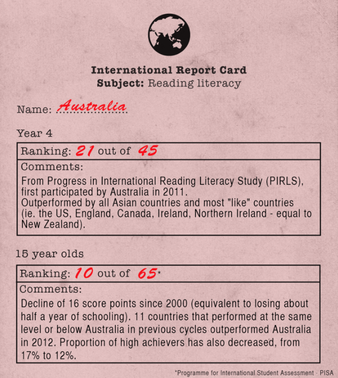 Is there a lesson for Australian schools?
Is there a lesson for Australian schools?
According to PISA (Programme for International School Assessment) Australia ranks 21 out of 45 in Year 4 Literacy, and is outperformed by all Asian countries and most similar countries such as the US, England and New Zealand.
Andreas Schleicher, the OECD director for education and skills, believes that targeting programs that focus on intervention in early childhood are essential in closing achievement gaps, as early as possible.
The lesson we can learn from the UK and US data is that TA intervention, can be a highly effective way to address the issue of literacy and numeracy achievement in Australian schools.
International research has provided strong evidence that TA led, structured intervention works. These changes do not require a massive education budget, but rather a reallocation of existing resources.
As the key national professional learning organisation for TAs, Australian Teacher Aide has taken a leading role in highlighting practices that have a positive impact on Australian literacy and numeracy standards, and are engaging with TAs and schools to ensure that support practices lead to student success.
And, if your school wants to be the one with the students skipping across the playground in haste to get to the [intervention] session; at the next leadership meeting, think about this: How is your school tapping into the potential of your TA teams to improve student outcomes?
